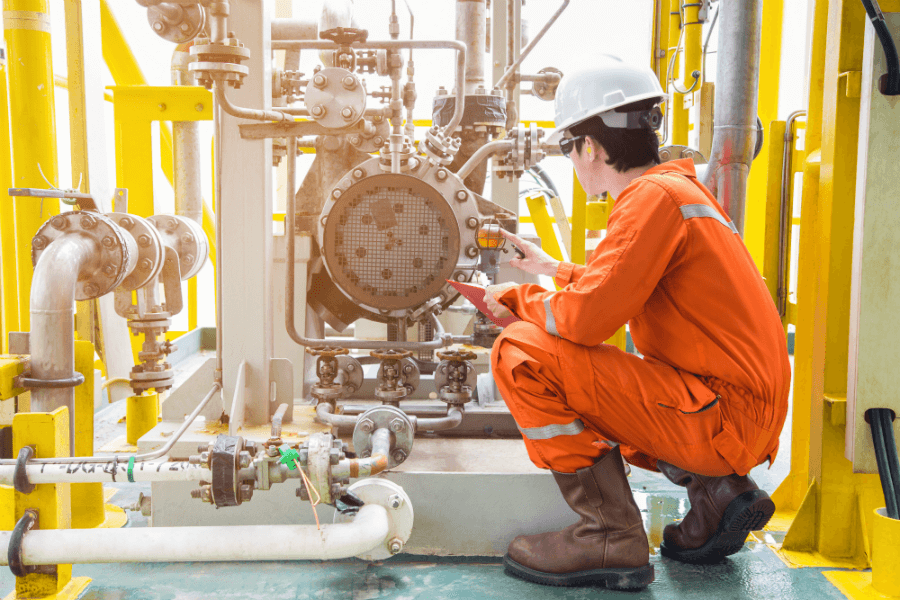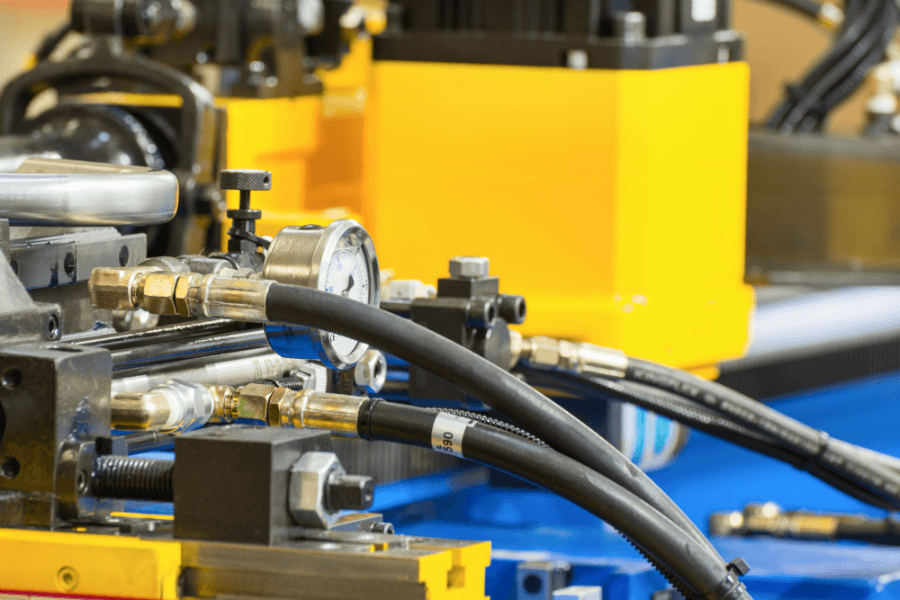Risk Based Inspection (RBI)
This Article is a sub-topic of the PUWER Guide
Apr 03, 2023

We’re all aware that maintaining a safe business environment is essential to any organisation, and those organisations involved in the industrial sector (especially those involved in the Oil & Gas) need to take it even more seriously. Regular maintenance and inspections need to be in place to avoid unplanned shutdowns and to protect citizens and the environment from industrial hazards.

A large amount of guidance has been developed for determining appropriate levels of inspection in proportion to the risk of failure and its consequences, with regards to pressure systems, storage tanks and containers of hazardous materials. These programmes are generally referred to as Risk Based Inspection (RBI). In a nutshell, RBI is the process of developing a scheme of inspection based on knowledge of the risk of failure.
Guidance on RBI can provide great insight to the planning of other inspection activities also where statutory provisions permit some discretion on the intervals of inspections e.g. The Provision and Use of Work Equipment Regulations (PUWER). One particular document 'Best practice for risk based inspection as a part of plant integrity management', is particularly useful for those persons wanting a full, but not technical explanation, of risk based inspection (RBI).
Although aimed at high risk applications in pressure and chemical storage, this guidance gives a useful insight for those persons wishing to implement inspection regimes within their responsibilities or audit those who have already done so. It is aimed at high risk applications where failure modes are recognised, and in most cases are inevitable, but can also inform a strategy for more common industrial machines where safety critical devices and characteristics are relied upon.
In many cases, an inspection regime is critical to avoiding unacceptable harm to persons and the business but in others it cannot be relied upon without certain 'technical measures'. For example, it is recognised that some failures are acceptable where the failure is detectable and the immediate consequences manageable. However, the decision about whether a failure is acceptable or not is one that must be taken with risk in mind and so similar technical failures may vary on their acceptability in different circumstances.
Example – Hydraulic Hose
Take the case of a hydraulic hose containing hydraulic oil under pressure during use. A standard hose has a catastrophic failure mode where there is no indication of that failure prior to its occurrence. This makes the failure 'not detectable' meaning that the likelihood of exposure in any failure event will remain stubbornly high where it is foreseeable that persons will be in proximity to the hose during operation/use. This combined with the severe consequences of contact with the substance during the failure means that a risk based inspection regime, in this case, will not be sufficient in itself to meet the employers duty to protect their workers and the public from the consequences of such a failure.
For this reason, equipment where access to these hoses is reasonably foreseeable during use, would require technical measures such as shielding and tethering of otherwise exposed hoses.
Technical standards which dictate 'state of the art' for products to presume conformity with 'Essential health and safety requirements' (EHSRs) do require that technical measures are taken in the design of these products to avoid exposure to such failures. The presence of these technical measures negates the need for risk-based inspection of the hose in most cases. However, risk-based inspection to ensure that the technical measures remain effective are still necessary where it is foreseeable that such measures may deteriorate. This is an example of how a PUWER inspection is typically used to avoid and detect potential exposure to a pressure related failure by ensuring that technical measures remain safe and effective.

On the other hand, mobile work equipment/earth moving equipment (e.g. FLTs and Excavators) will not require tethering and shielding in many cases. This indicates that the authors of the respective technical standards relating to those products where the hoses are used feel that exposure to hydraulic hoses under pressure (that may fail during use) is not reasonably foreseeable for mobile plant in normal operating conditions.
For example, the hydraulic power used to lift the load for an FLT occurs during lifting only. It is primarily the role of the driver of the FLT to ensure that persons are not in the lifting area as a part of the safety of the lifting operation. This also happens to avoid (frequency of) exposure to the direct, as well as indirect, consequence of a hose failure thus shielding is not required and it would appear to be on this basis that the authors of the aforementioned standards have chosen not to specify shielding and tethering as standard.
Therefore, there is little basis in risk for PUWER inspection of FLTs at intervals with the objective of identifying defects in hoses to avoid exposure to the consequence of a failure. However, FLTs have other features that may deteriorate in a reasonably foreseeable manner, taking account of the circumstances of use, and so it is likely that PUWER inspections will remain a requirement, albeit with an adjusted scope, to identify those defects and trigger preventative and corrective action.
Note, the individual circumstances of intended and actual use for each application should be taken into account when deciding on appropriate technical measures. This applies to the product designer or any person looking to use the product in a way not intended by the designer.
It may still be the case that risk based inspection is necessary regardless of the technical measures. This may occur due to:
- The risks encountered during recovery and repair should a failure occur being reasonably practicable to avoid by way of inspection e.g. preventative maintenance.
- Risk to business continuity or other loss (e.g. product scrap) is unacceptable
PUWER Inspection Planning & Priortisation (PIPP)
PIPP is using similar principles and objectives to RBI to help determine what are suitable intervals to repeat PUWER inspections on work equipment such as industrial machines. However, the level of detail in the record keeping for analysis and decision making is not necessarily comparable since the risk levels are far lower in general for industrial machines as they are for process equipment.
A further difference is that RBI tends to be used at component level with a scheme of inspection being compiled for related parts that may be inspected during access to an area of the system. Whereas PIPP and the following PUWER inspection are done at system/machine level and it is not common to see a scheme of inspection for PUWER down to component level. Nevertheless, the similarities between the two approaches are hard to ignore and the sheer volume and depth of guidance on RBI makes its recourses an attractive reference tool for anyone planning to establish their own PIPP regime.
If you wish to learn more about PIPP, visit our designated page which explains the process.
